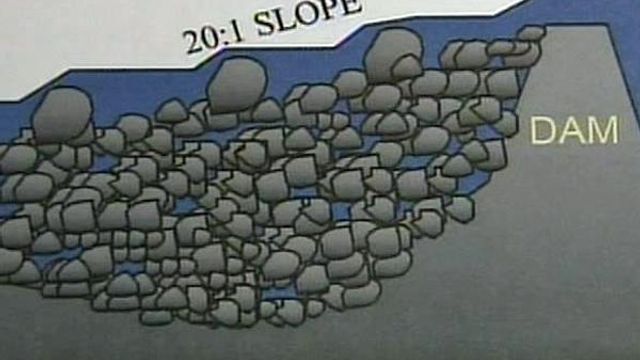Local News
State sees Cape Fear fish ladders as a darned good idea for dams
The river looks free, but three dams across it belie the notion. Boats use locks to bypass dams, but that’s no help for shad, Atlantic sturgeon and other species that try to make it upstream to spawn.
Posted — UpdatedFAYETTEVILLE, N.C. — The state wants fish ladders on the Cape Fear River to help some popular kinds of fish get upstream to Fayetteville and beyond, and that idea grabs anglers – hook, line and sinker.
The river looks free, but it’s not. There are three dams across it. Boats use locks to bypass them, but that’s no help for shad, Atlantic sturgeon and other species that try to make it upstream to spawn.
"The traditional, historical spawning grounds for these species is the Cape Fear about 30 miles upstream of Fayetteville,” said state wildlife biologist Keith Ashley.
Now, state wildlife officials propose building fish ladders, made of rock ledges, that would gradually slope from the river to the top of the dam.
"It will be a series of rock arches, of fairly large step boulders," Ashley said.
The Cape Fear River has three sets of locks and dams – one near Riegelwood, one in Elizabethtown, and one on the Cumberland-Bladen County line. One in seven fish are able to get past them, but the ladders could spawn a fishing bonanza.
Ladders, essentially man-made rapids that allow fish to pass over the dams, are a new concept in North America, Ashley said. He said they are fairly common in Europe.
“They are being looked at in a new light, so that we can do all we can to improve fish passage,” Ashley said.
Officials say they figure the number of striped bass could jump from 10,000 to 2 million. Sturgeon could go from 100 to 5,000, shad from 200,000 pounds caught to 3 million. They calculate that the catch of river herring could go from 1,000 pounds to 12 million pounds.
Each ladder will cost up to $7 million.
Supporters say that will buy anglers a lot of good luck.
The Army Corps of Engineers built the dams between 1915 and 1935 to help commercial barges navigate the river. No commercial traffic has come up the river in more than a decade.
A bill in the General Assembly envisions having the Corps construct the ladders as part of improvements before the state takes control of the three dams. The Corps has to undertake mitigation work on the river in return for Fish & Wildlife Service permission for dredging in the Wilmington area.
Copyright 2024 by Capitol Broadcasting Company. All rights reserved. This material may not be published, broadcast, rewritten or redistributed.





